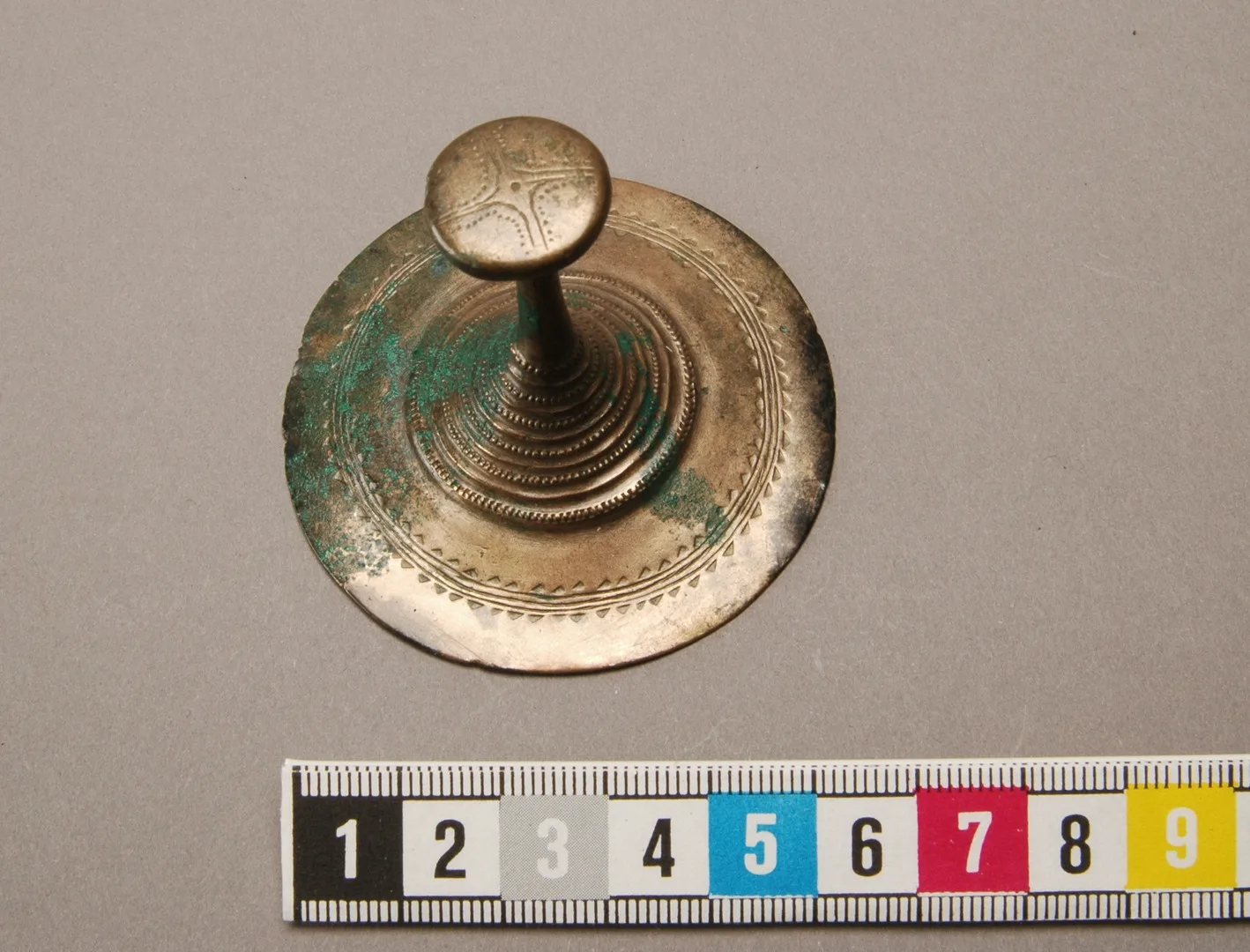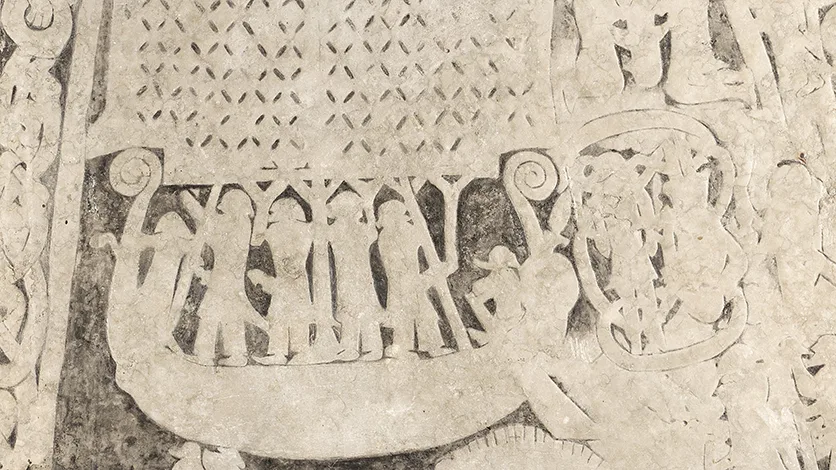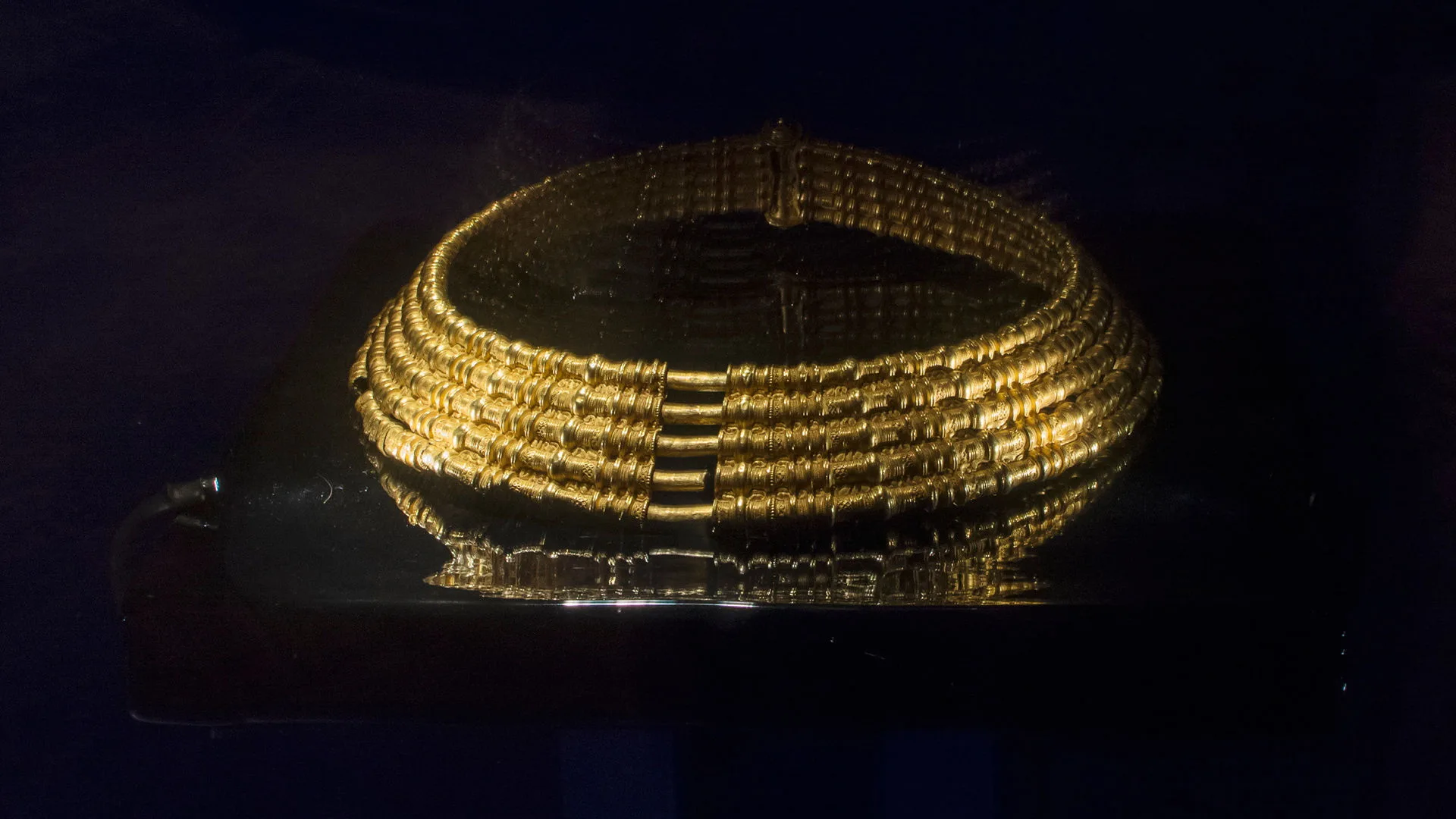Nordic Bronze Age jewellery
Stone Age
12,000 BC – 1700 BC
Bronze Age
1700 BC – 500 BC
Iron Age
500 BC – AD 1100
The neck collar was one of the items of jewellery a woman might wear during the Bronze Age. These collars could be decorated with spiral motifs, a design also found in the Greek world and Central Europe during the same period. A particularly ornate type of collar is known as the Stockhult type.
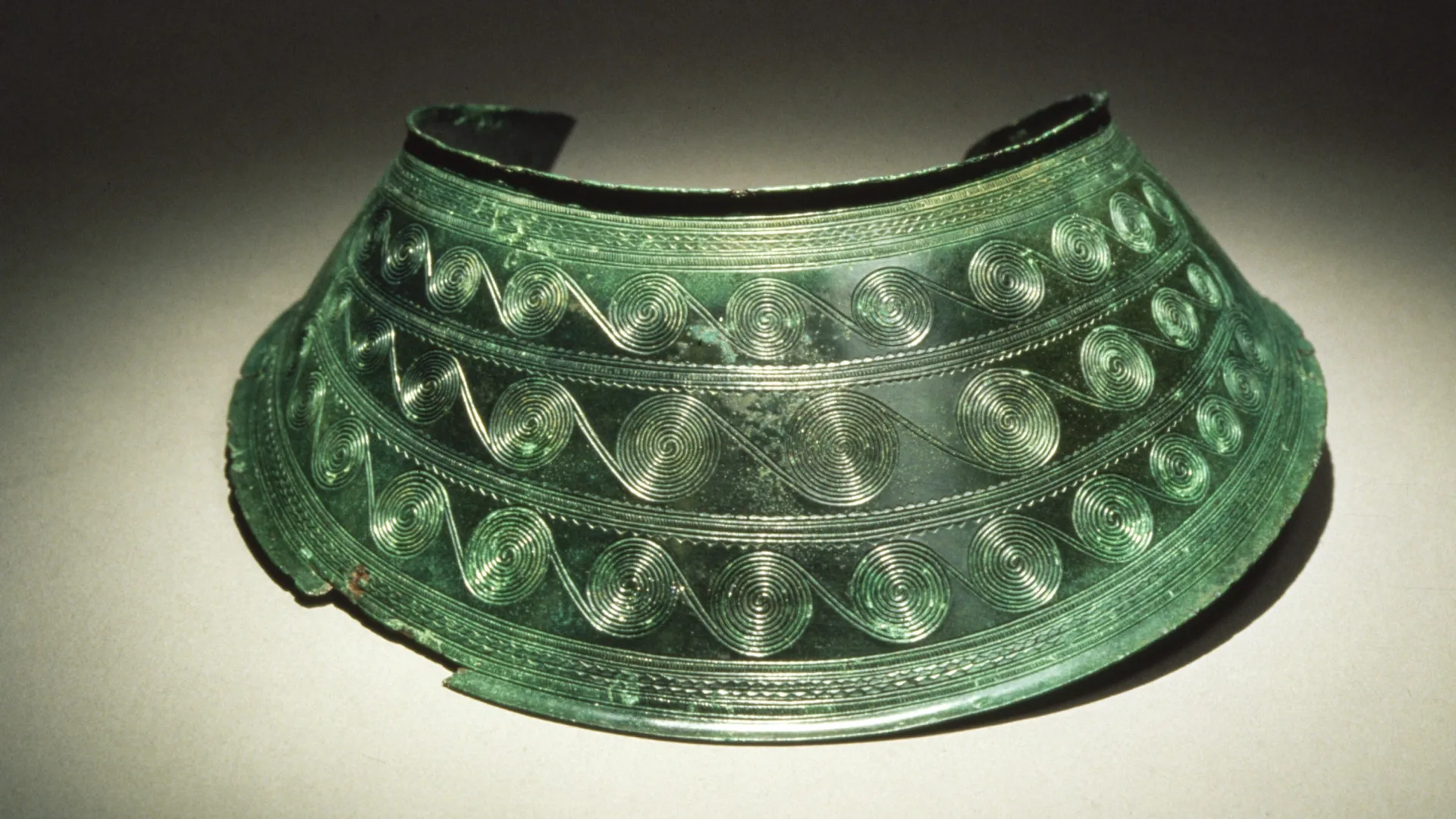
The name comes from a collar discovered at Stockhult in Loshult parish, northeastern Skåne. The collar was part of a rich burial that also included two small male figurines, jewellery, and weapons. The grave dates to between 1500 and 1300 BC.
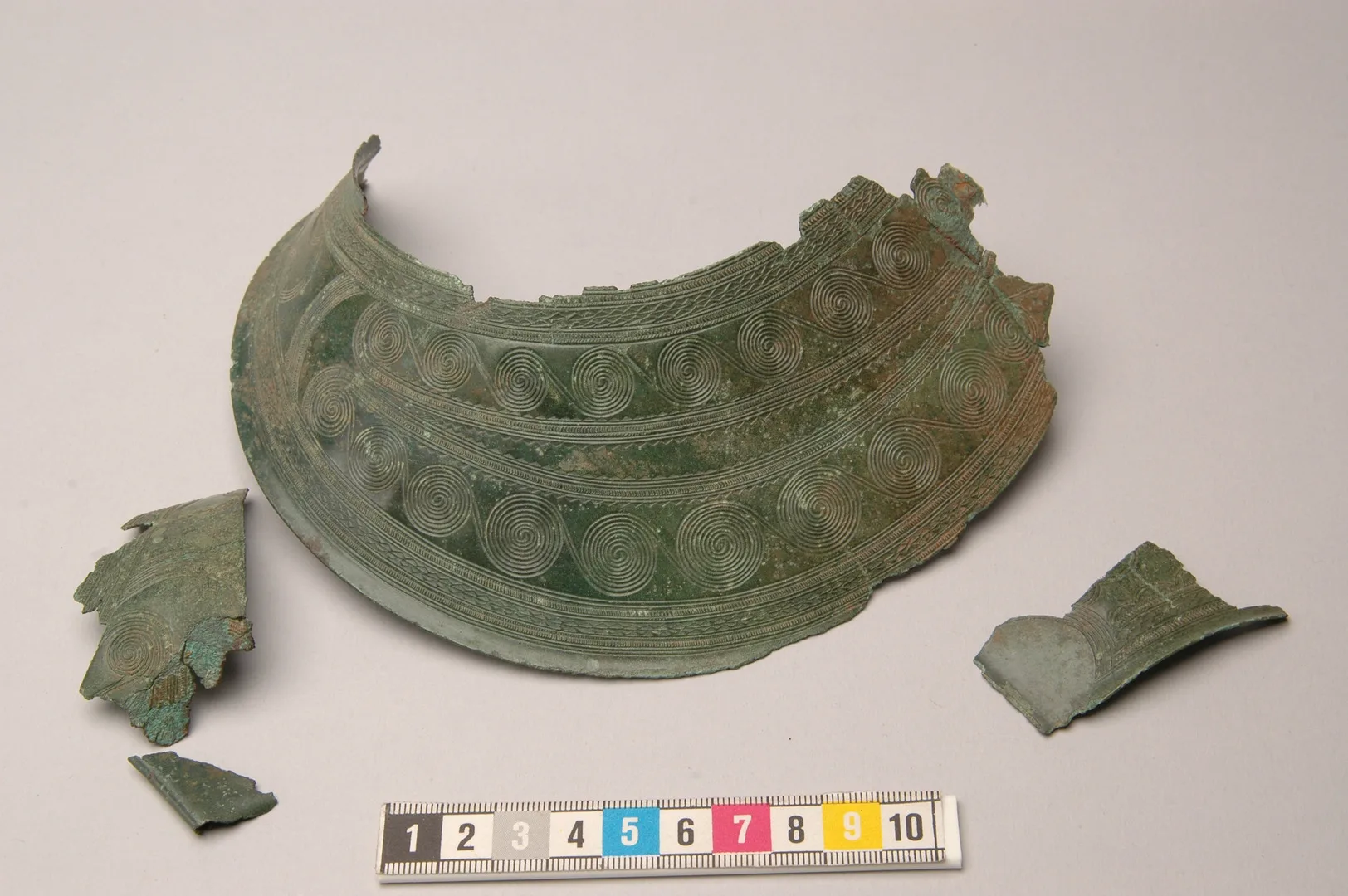
Collar from Stockhult
Originally, these collars gleamed like gold. Today, they have taken on a greenish hue. This is because bronze changes colour over time when exposed to air, soil, and water. Like copper, bronze develops a green patina with age.
Magnificent bronze neck rings
Another form of Bronze Age neck adornment was the neck ring. These were hollow tubes, often imitating twisted wire, with large oval end-plates terminating in a clasp made of prominent spiral designs. The end-plates are decorated with motifs of ships, undulating waves, and large ceremonial axes.
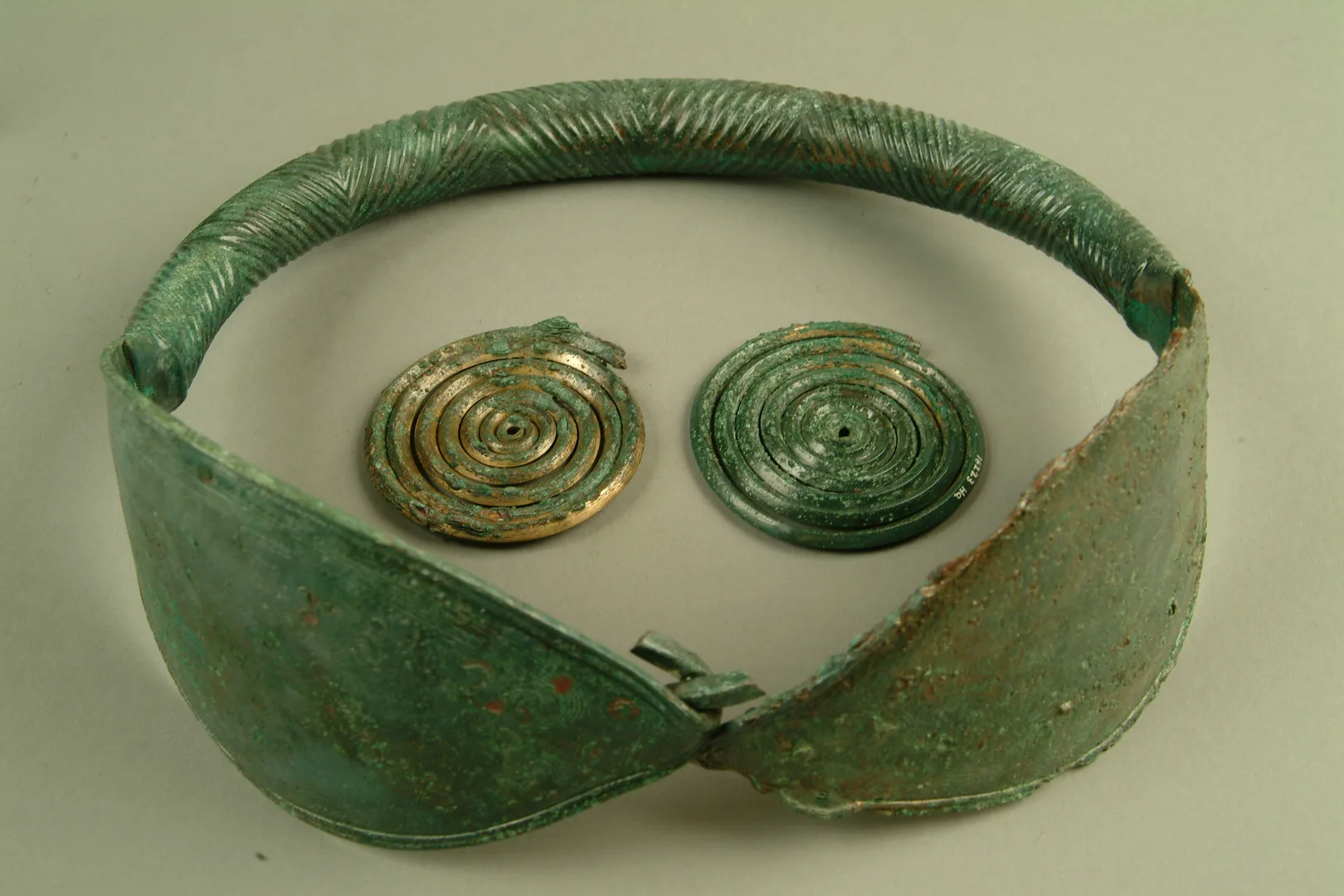
Neck ring
Neck ring from cirka 900–500 BC, found in Skåltorp, in Halland.
On view at Historiska museet in the exhibition Forntider 1
Neck rings are usually thought to have been worn by women during the Bronze Age, but small male figurines have also been found wearing them, and there are a few male burials with neck rings. Typically, however, neck rings are not found in graves, but rather in hoards or ritual deposits.
Tutulus
In the Bronze Age, small bronze cones known as tutuli were worn. These pointed, conical bronze ornaments were typically used as belt decorations. A horizontal bar on the reverse allowed them to be fastened to a strap around the waist of a woman’s outfit. Tutuli could also be used to decorate horse tack.
This particular tutulus was found at Ekudden in Turinge, Södermanland. It was part of an elaborate costume ensemble that included arm rings and numerous small bronze tubes that adorned the cords of a string skirt. These dress accessories were discovered in a large hoard deposited in a wetland, alongside axes, chisels, spears, and sickles. The find dates to around 1400–1100 BC.
